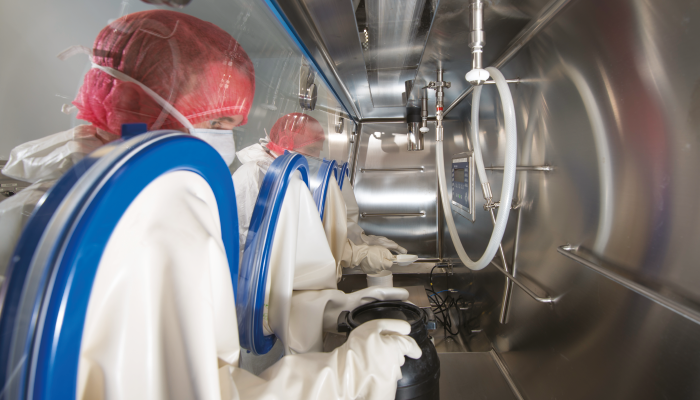In 2023 the FDA released Guidance for Industry, Pediatric Drug Development Under the Pediatric Research Equity Act and the best Pharmaceuticals for Children Act: Scientific Considerations, in which sponsors are advised to provide plans for developing age-appropriate formulations of drug products in cases where an adult formulation is not appropriate for pediatric patients (1). With many medicines, this can translate to a fairly straightforward formula: children = liquids.

Louise Carpenter
This move from the FDA is not only vital to ensure availability of the right drug products for the right patient demographics and reducing off-label use in children; from a business standpoint, it presents a useful tactic towards sustaining and maintaining growth. Given that the market for oral liquids is predicted to increase at a compound annual growth rate of around 6.5 percent in the coming decade (2), the outlook for substantial gains in this segment are as promising as they are important. Crucially, pediatric exclusivity typically extends intellectual property protection by 180 days, providing nearly six additional months of branded drug sales.
Liquid formulations offer some advantages over traditional oral solid dose (OSD) products, particularly in terms of ease of administration. Liquid formulations are easier to ingest compared to tablets or capsules, which can be particularly challenging for children (as well as seniors) who may struggle to swallow solid forms. They are also good for dosing flexibility. The same bottle of liquid medication can be used to administer different doses, simply by adjusting the volume given with a spoon, syringe, or dosing cup. This variability is good for supply chains too because it eliminates the need to develop a new stock-keeping unit for each dose variation, simplifying inventory management and reducing production costs.
Liquids also have increased drug absorption and bioavailability that can lead to faster onset of action, and allow for incorporation of sweetened or flavoured vehicles to mask the bitterness or unpleasant tastes of APIs.
So why don’t more companies develop liquid formulations from the onset?
There are challenges. One key issue is the inherent instability of liquid formulations compared to their oral solid dose counterparts. Liquid forms are more susceptible to physical and chemical degradation, and the potential for microbial growth is significantly higher, necessitating rigorous preservation and/or sterilization processes to maintain product integrity.
Liquid formulations also require robust packaging solutions capable of preventing both breakage and formulation interaction. A broken container can result in the total loss of the product, posing significant logistical and financial concerns.

The containers are also relatively bulky and inconvenient for patients. Single-use sachets can be an attractive alternative for bolstered convenience, but this packaging format incurs its own obstacles; most notably ensuring dose accuracy. (It is worth noting here however, that a single-use sachet does have the added benefit of the option to nitrogen blanket, decreasing any potential oxidative issues with the formulation).
We also can’t overlook the high potency angle. More than 25 percent of drugs on the market today are classed as highly potent, with 60 percent of oncology drugs in development involving highly potent active pharmaceutical ingredients (HPAPIs) (3). As more and more ADFs in development contain HPAPIs, this escalated high potency ratio will ultimately carry over into the development of pediatric formulations. The approach to handling such molecules requires stringent controls to ensure safety and efficacy, ideally involving contained engineering solutions to ensure drug product integrity and operator safety – including the use of dedicated facilities, HEPA filtration systems, rigorous cleaning validation procedures, and personnel highly trained in handling potent molecules.
Once the HPAPI is fully wetted, the risk to the operator is significantly reduced, but getting the HPAPI fully wetted safely can be a challenge. This is primarily because of the risk of airborne contamination, as HPAPIs are typically fine powders and can easily become airborne, posing a serious inhalation hazard to operators. The powder's propensity to accumulate static electricity further increases the likelihood of dusting, where particles can disperse into the air, especially during handling or transfer. Controlling the wetting process is therefore crucial; if the liquid is added too quickly or inappropriately, it can cause splashing or aerosolization, potentially releasing the HPAPI into the air. Effective containment is essential, requiring specialized equipment like isolators or closed systems to prevent any escape of the powder before it is fully wetted. Additionally, the variability in the physical properties of HPAPIs, such as particle size and hydrophobicity, can make the wetting process unpredictable, sometimes leading to prolonged periods of risk as the powder may resist wetting or form clumps.
Given the formulation-specific challenges, it’s perhaps unsurprising that a pediatric dosage form “cottage industry” has sprung up to help pharma brand owners expand into liquids. If you choose the route of a CDMO, make sure they have dedicated expertise in liquid dosage formulation development and manufacturing, as well as the knowledge to navigate the regulatory landscape. Also look for advanced analytical testing and taste-testing facilities such as electronic tongues (e-tongues), which are a great way to help a product achieve patient compliance. The right taste masking is crucial for pediatric formulations because any disagreeable flavours are more pronounced in liquid form compared to solid dose products.
In summary, oral liquid dosage forms present unique benefits and challenges with additional considerations when the drug product is classified as being potent, but with the right expertise and technology, these hurdles can be effectively overcome and managed to deliver high-quality, patient-centric therapies.

References
- FDA Draft Guidance,” Pediatric Drug Development Under the Pediatric Research Equity Act and the Best Pharmaceuticals for Children Act: Scientific Considerations (2023). Available here: https://www.fda.gov/regulatory-information/search-fda-guidance-documents/pediatric-drug-development-under-pediatric-research-equity-act-and-best-pharmaceuticals-children-act
- Future Market Insights, Non-Sterile Liquids/Suspensions Market by Dosage Form, End User Region, Forecast 2023 to 2033 (2023). Available here: https://www.futuremarketinsights.com/reports/non-sterile-liquids-suspensions-market
- Contract Pharma, The Evolution of HPAPI Manufacturing for CDMOs (2023). Available here: https://www.contractpharma.com/issues/2023-10-02/view_features/the-evolution-of-hpapi-manufacturing-for-cdmos/




